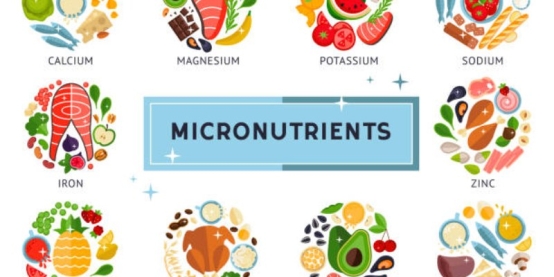Understanding Macronutrients: Carbs, Proteins, And Fats
Nutrition can feel confusing with all the diet trends and advice available. But at the heart of healthy eating are the macronutrients—the essential nutrients the body needs in large amounts to function optimally.
Unlike micronutrients such as vitamins and minerals, macronutrients provide calories and energy. The three primary macronutrients—carbohydrates, proteins, and fats—play influential roles in health, fitness, and daily energy. Understanding how they work and how much to consume can help build a balanced diet suited to individual needs.
What Are Macronutrients?
Scientifically, macronutrients are nutrients required in large quantities compared to micronutrients. They provide the following energy values:

Carbohydrates: 4 kcal per gram
Proteins: 4 kcal per gram
Fats: 9 kcal per gram
The body needs all three, but the balance matters far more than elimination. Diets that drastically cut out one macronutrient group often fail in the long run, disrupting metabolism, energy levels, or overall health.
Carbohydrates
Types of Carbohydrates
Simple Carbs – Found in sugar, honey, and sweets. They digest quickly and spike blood sugar.
Complex Carbs – Found in whole grains, beans, and starchy vegetables. They release energy steadily.
Fibre – Indigestible carbs present in fruits, vegetables, and whole grains, vital for gut health.
Carbs also differ as:
Natural carbohydrates include oats, potatoes, and fruits.
Refined Carbohydrates, like white bread or sugary snacks.
Functions of Carbohydrates
Primary energy fuel is essential for high-intensity activities.
Essential for brain function—glucose is the brain’s preferred energy source.
Support endurance, alertness, and exercise recovery.
Daily Requirements
The RDA sets a minimum of 130 grams/day for adults, with the AMDR recommending 45–65% of total daily calories from carbs.
Sources
Healthy carbs: brown rice, quinoa, beans, lentils, vegetables, and fruits.
Less ideal carbs: sodas, pastries, processed white bread.
Myths & Misconceptions
“Carbs make you fat”: Weight gain is tied to excess calories, not carbs alone.
Low-carb diets: Effective for some groups (type 2 diabetes, specific weight-loss goals), but not universally necessary.
Proteins
What Proteins Are
Proteins are made of amino acids, classified as:
Essential Amino Acids: Can't be produced by the body and must come from the diet.
Non-Essential Amino Acids: Produced internally.
Functions of Proteins
Build and repair muscle.
Key for enzymes, hormones, and DNA functions.
Support immunity and metabolic health.
Daily Requirements
General adults: 0.8 g per kilogram of body weight.
Athletes or physically active: 1.2–2.0 g/kg, depending on training intensity.
Sources
Animal-based: eggs, lean meat, dairy, fish.
Plant-based: beans, lentils, soy, quinoa.
Protein Quality
Complete proteins: Provide all essential amino acids (examples: eggs, soy, dairy).
Incomplete proteins: Plant-based but can be combined, like rice and beans.

Myths & Misconceptions
More protein doesn’t automatically mean more muscle—progress also requires resistance training.
High-protein diets are usually safe but may Stress the kidneys in people with existing kidney conditions.
Fats
Types of Fats
Saturated Fats – Found in dairy, meat, and coconut oil; moderation recommended.
Unsaturated Fats –
Monounsaturated: olive oil, nuts.
Polyunsaturated: fatty fish, flaxseeds.
Trans Fats – Mostly in processed foods; to be avoided.
Functions of Fats
Dense energy source.
These compounds help absorb fat-soluble vitamins A, D, E, and K.
It is critical for hormone production and brain development.
Daily Requirements
The AMDR for fats is 20–35% of daily calories, with less than 10% from saturated fats.
Sources
Healthy Fats: olive oil, avocados, walnuts, salmon.
Unhealthy Fats: margarine, fried fast food, packaged snacks.
Myths & Misconceptions
“Fat makes you fat”: Overeating calories is the real culprit.
“All saturated fats are bad”: Some, like dairy fats, may have neutral effects if consumed moderately.
How Macronutrients Work Together
Meals rarely contain just one macronutrient, and that’s a good thing. A meal with carbs, proteins, and fats:
Improves satiety and digestion control.
Stabilises blood sugar and energy release.
Ensures diverse nutrient absorption.
Prevents imbalances, since an excess or lack of one shifts how the body uses the others.
Calculating Your Macronutrient Needs
Macronutrient needs depend on age, sex, weight, and activity levels.
Carbs: 45–65% of calories
Proteins: 10–35%
Fats: 20–35%
Examples by Goal:
Weight Loss: Slightly higher protein, reduced carbs.
Muscle Gain: Higher protein and carb intake for recovery.
Maintenance: Balanced ratios within AMDR.
Special groups (pregnant women, endurance athletes) require tailored distributions, often guided by health professionals.
Practical Application
Tracking Macros
Use nutrition apps or food labels to gauge values.
Learn portion visualisations, like palm-sized protein servings.
Tips for Balanced Meals
Always combine carbs with protein or fats for steadier energy.
Focus on whole, less processed foods.
Be mindful of hidden fats/oils and sugar in packaged products.
Common Mistakes
Overestimating protein needs.
Ignoring oils and dressings.
Depending on refined carbs instead of complex ones.

Sample Application
Muscle Gain Day: oatmeal + eggs for breakfast, chicken + rice for lunch, salmon + quinoa for dinner.
Weight Loss Day: Greek yoghurt + berries, grilled chicken salad with olive oil, lean beef + vegetables + sweet potato.
Re-Emphasising Why Macronutrients Matter
Macronutrients form the backbone of human health. From fueling workouts to supporting brain activity, each nutrient carries crucial responsibilities. Rather than fearing carbs, proteins, or fats, the key lies in tailoring intake to individual goals and lifestyle. Eating a variety of whole, nutrient-rich foods, in balanced proportions, delivers sustainable results.
Sources
Related Posts

The Role Of Diet In Managing Autoimmune Diseases

Vegan Sugar Cookies: Simple Recipes for Soft, Chewy Treats

Moroccan Tagine Recipes For Beginners: Easy, Authentic, And Flavorful Dishes

The Ultimate Guide To The Ketogenic Diet For Beginners

Top 10 Most Popular Desserts on Thanksgiving
